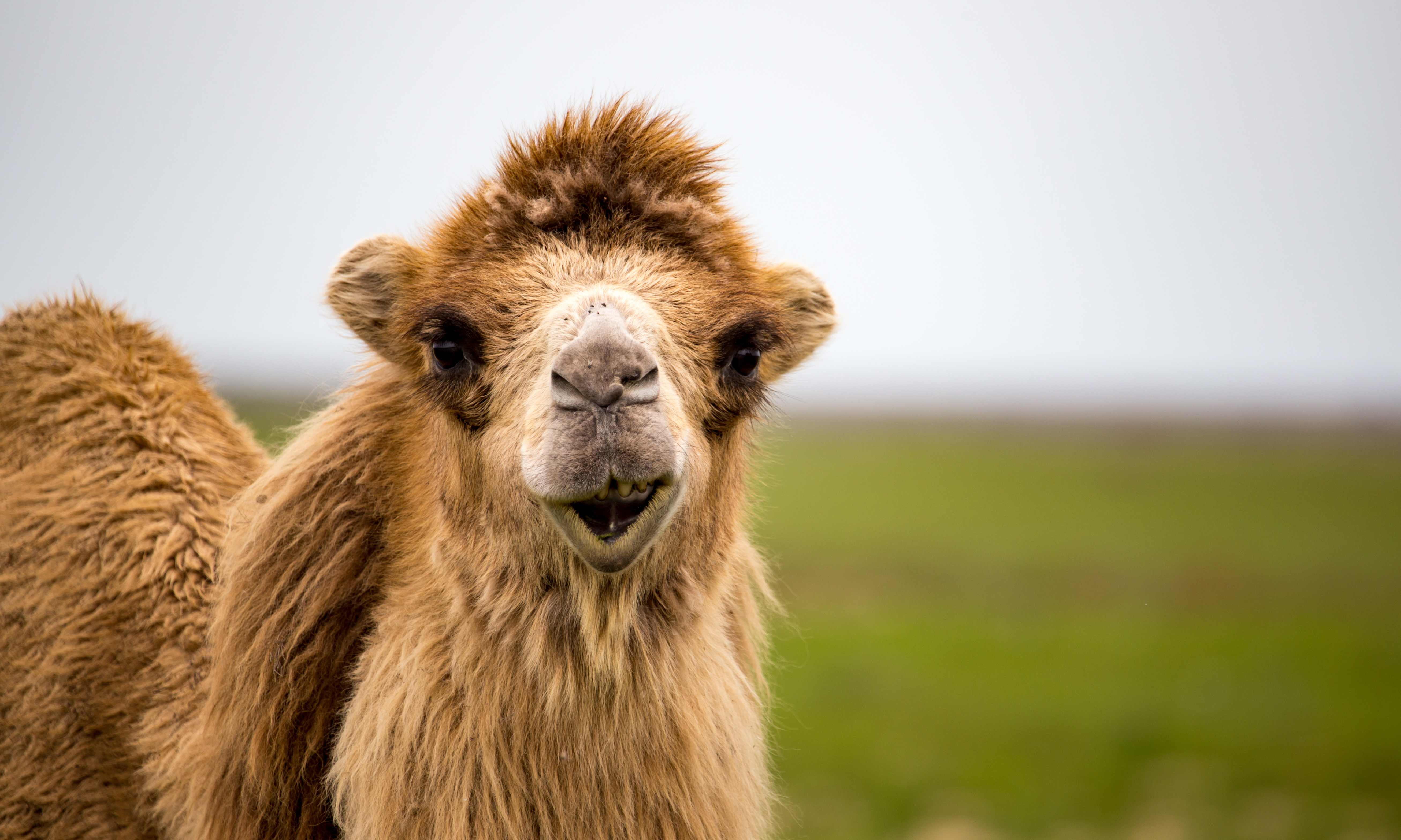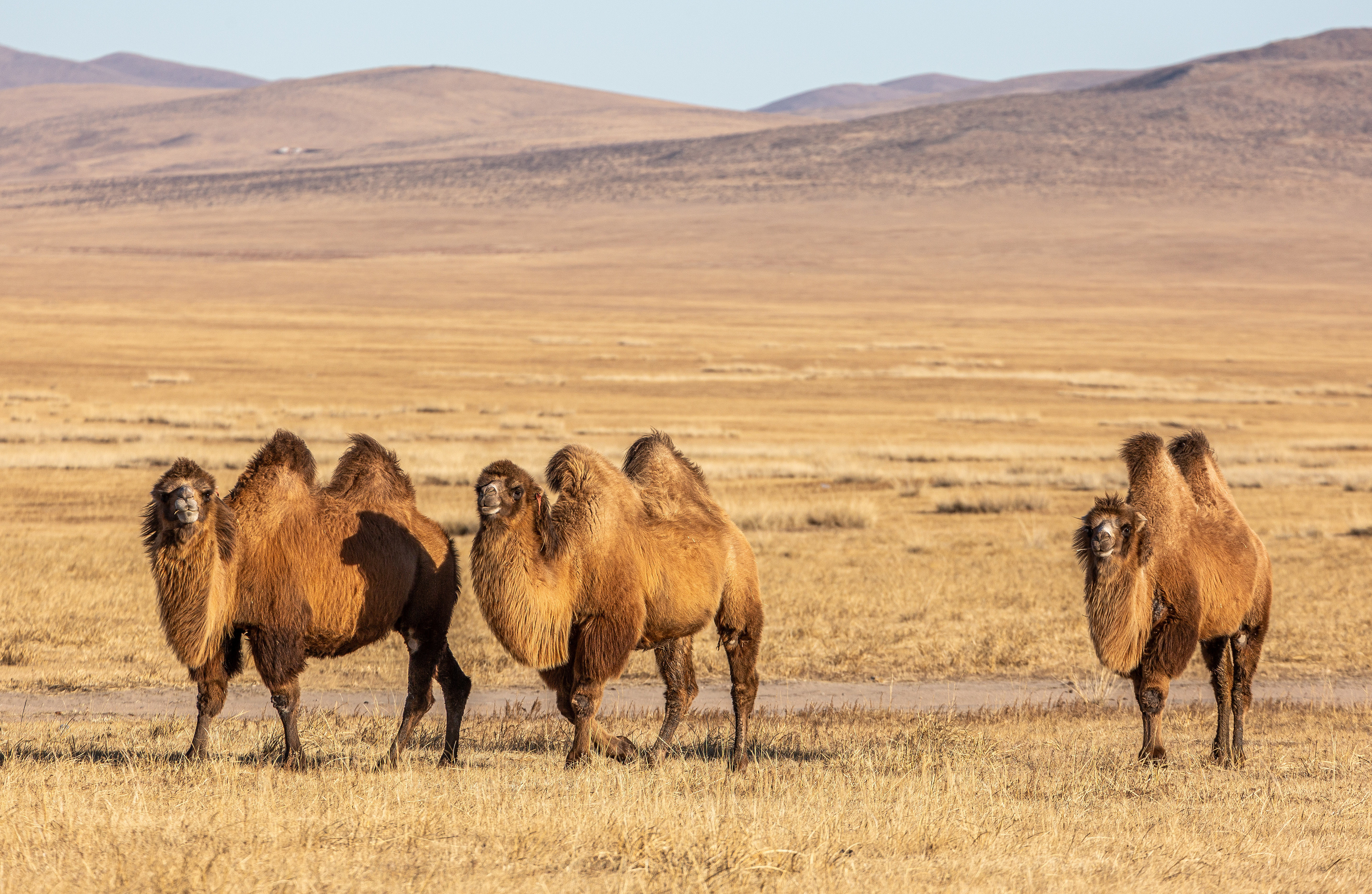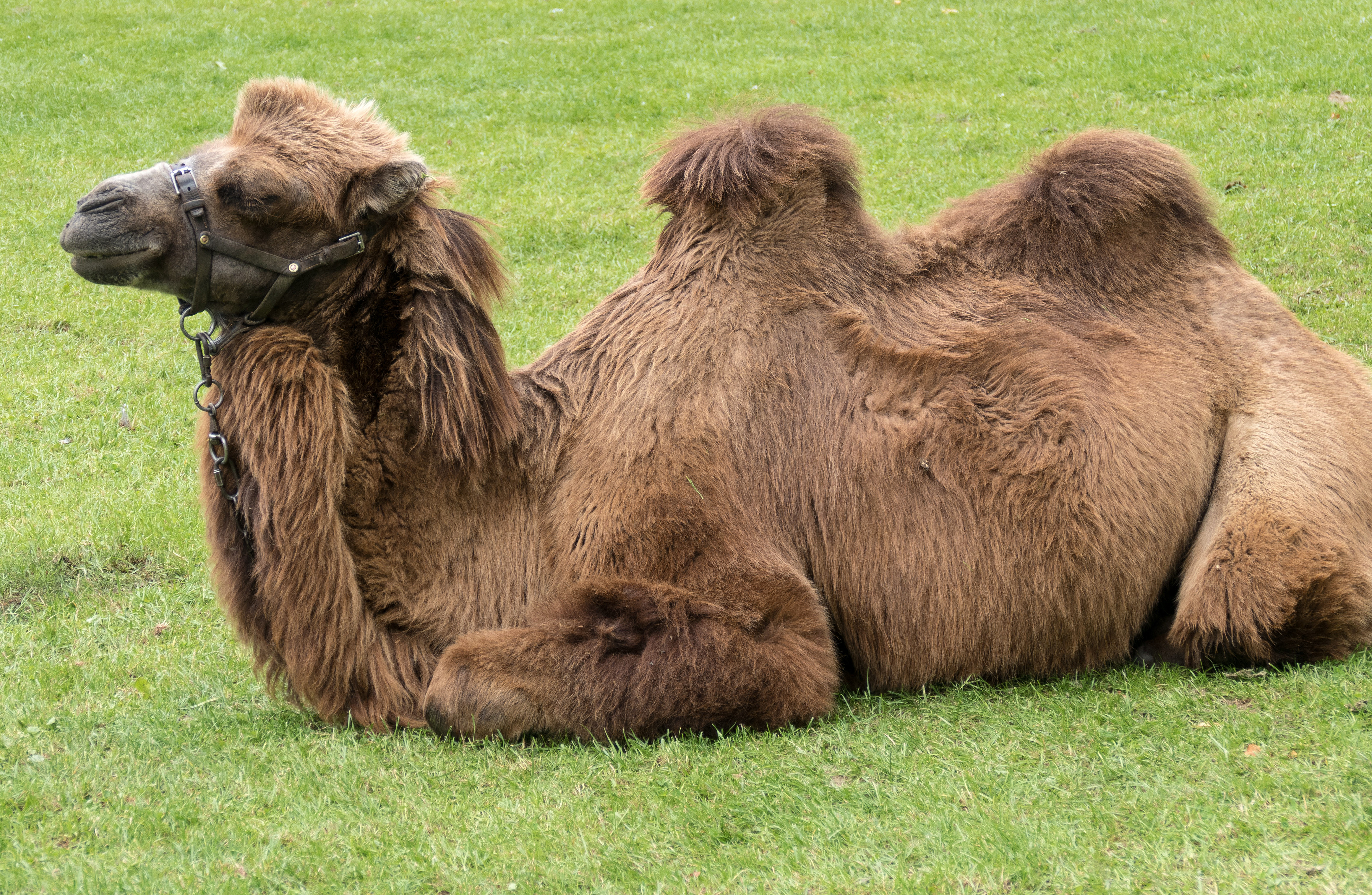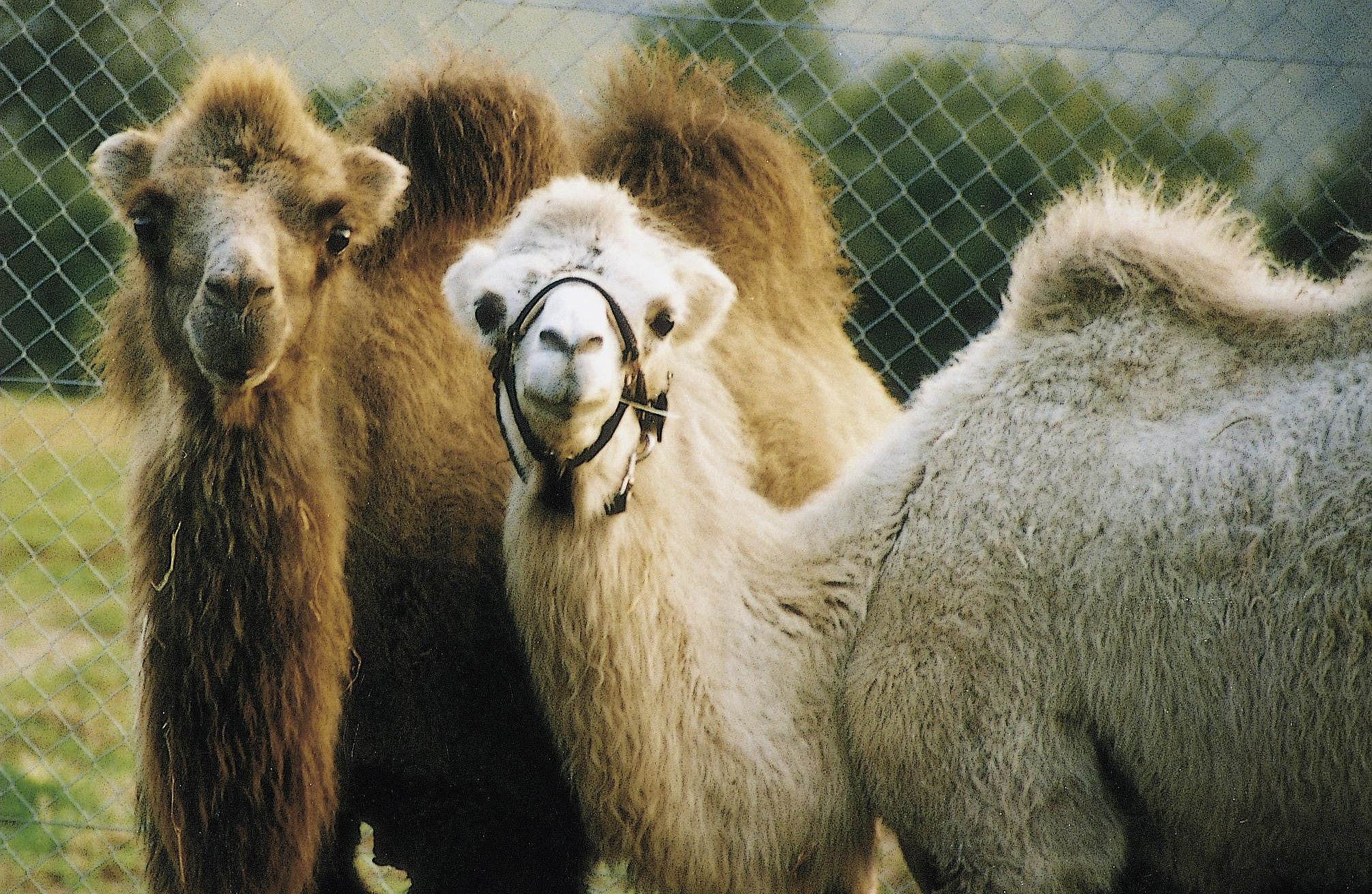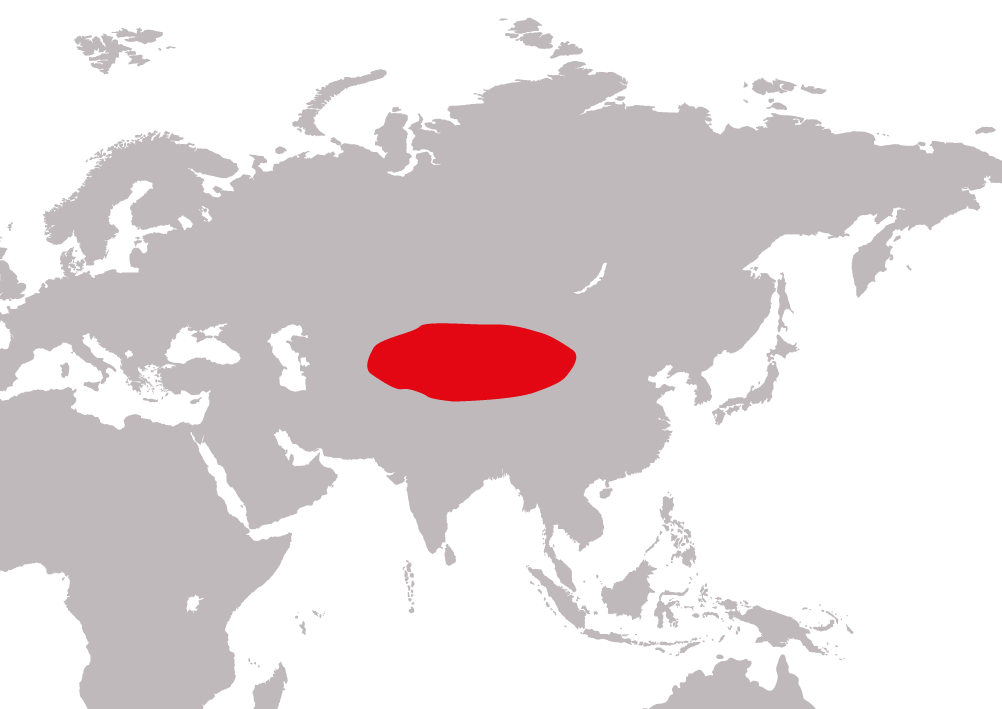Adaptation artist
Bactrian camels have to cope with extreme weather conditions in their natural habitat. However, this doesn't bother them at all. They can withstand temperatures from -35 degrees to +45 degrees centigrade and are perfectly adapted to their environment.
For example, Bactrian camels are able to adjust their body temperature to 34 degrees centigrade at night and 42 degrees centigrade during the day and therefore sweat less.
They can absorb up to 120 litres of water in just 10 minutes. The oval red blood cells expand to up to 250% of their normal volume as a result of water absorption, and even their organs store water. In contrast, Bactrian camels only produce about 1 litre of urine per day, whereas horses, for example, produce 3 to 10 litres of urine per day. Bactrian camels can cope with a water loss of up to 25% in their bodies without suffering any damage. Due to the very high number of red blood cells, their oxygen supply is guaranteed even with very viscous, slow-flowing blood, making it possible for the animals to go up to a month without water. Their faeces are used as fuel in the area of origin.
However, the assumption that Bactrian camels store water in their humps is incorrect. The humps merely serve as fat stores.
